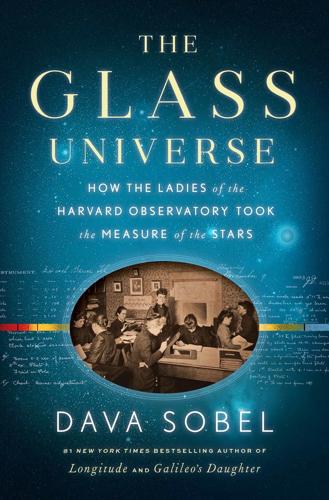
The Glass Universe: How the Ladies of the Harvard Observatory Took the Measure of the Stars
by
Dava Sobel
Published 6 Dec 2016
Some were alumnae of the newly founded women’s colleges, though others brought only a high school education and their own native ability. Even before they won the right to vote, several of them made contributions of such significance that their names gained honored places in the history of astronomy: Williamina Fleming, Antonia Maury, Henrietta Swan Leavitt, Annie Jump Cannon, and Cecilia Payne. This book is their story. PART ONE The Colors of Starlight I swept around for comets about an hour, and then I amused myself with noticing the varieties of color. I wonder that I have so long been insensible to this charm in the skies, the tints of the different stars are so delicate in their variety. . . .
…
Solon Bailey serves as interim director. 1920 Harlow Shapley and Heber Curtis debate the scale of the universe. 1921 Harlow Shapley is named fifth director. Henrietta Leavitt dies Harlow Shapley and Annie Cannon explore the relation between spectral type and magnitude. 1922 International Astronomical Union adopts Harvard’s Draper stellar classification, representing the work of Williamina Fleming, Antonia Maury, and especially Annie Jump Cannon. 1923 Adelaide Ames enrolls as Harvard’s first graduate student in astronomy. Cecilia Payne arrives from England as Harvard’s second graduate student in astronomy Harvard Reprints series initiated to disseminate staff members’ published articles in professional journals. 1924 Harlow Shapley issues the first in a series of papers detailing the distance, size, and structure of the Magellanic Clouds.
…
The article by astronomer Simon Newcomb that galvanized Miss Bruce was titled “The Place of Astronomy Among the Sciences”; it appeared in 1888 in the Sidereal Messenger. Williamina Fleming’s prepared speech for the Chicago conference was published as “A Field for Woman’s Work in Astronomy” in 1893 in Astronomy and Astro-Physics. CHAPTER FOUR: Stella Nova Edward Pickering reported Mrs. Fleming’s first nova discovery, “A New Star in Norma,” in the pages of Astronomy and Astro-Physics. Pickering’s correspondence with Antonia Maury, also with the Reverend Mytton Maury, is held in the Harvard University Archives. CHAPTER FIVE: Bailey’s Pictures from Peru Annie Jump Cannon was a lifelong diarist and prolific letter writer.
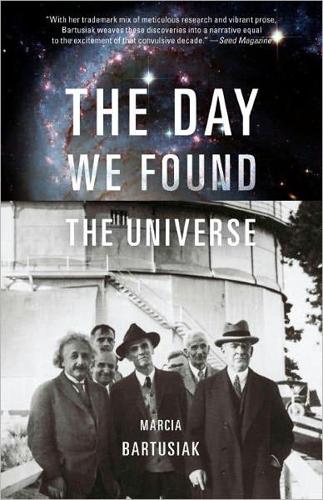
Day We Found the Universe
by
Marcia Bartusiak
Published 6 Apr 2009
Resembling assembly-line workers in a factory, with their plain, unadorned dresses, these dedicated women—swiftly, accurately, and cheaply—numbered each star on a given plate, determined the star's exact position, and assigned it either a spectral class or photographic magnitude. Annie Jump Cannon, who established the stellar classification system adopted internationally in the course of this work, praised Pickering's modern outlook. “He treated [the computers] as equals in the astronomical world,” she claimed (somewhat Pollyannishly), “and his attitude toward them was as full of courtesy as if he were meeting them at a social gathering.” He was their gallant Victorian gentleman. Pickering's first hire was his housekeeper, Williamina Fleming, who had displayed a keen intelligence in carrying out her duties.
…
“Completion of the Big Crossley Reflector Dome for the Lick Observatory.” San Francisco Chronicle, September 27. Baida, P. 1986. “Dreiser's Fabulous Tycoon.” Forbes 400 (October 27): 97-102. Bailey, S. I. 1919. “Variable Stars in the Cluster Messier 15.” Annals of the Astronomical Observatory of Harvard College 78: 248-50. ——. 1922. “Henrietta Swan Leavitt.” Popular Astronomy 30 (April): 197-99. Ball, R. S. 1895. The Great Astronomers. London: Isbister. Barnard, E. E. 1891. “Observations of the Planet Jupiter and His Satellites During 1890 with the 12-inch Equatorial of the Lick Observatory.” Monthly Notices of the Royal Astronomical Society 51: 543-56.
…
Here was a ready workforce, he noted in one annual observatory report, entirely “capable of doing as much and as good routine work as astronomers who would receive much larger salaries. Three or four times as many assistants can thus be employed, and the work done correspondingly increased for a given expenditure.” Williamina Fleming (standing) directs her “computers” while Harvard Observatory director Edward Pickering looks on (Harvard College Observatory) These women “computers,” as they were called, many with college degrees in science, were situated in two cozy workrooms, pleasantly decorated with flowered wallpaper and star charts.
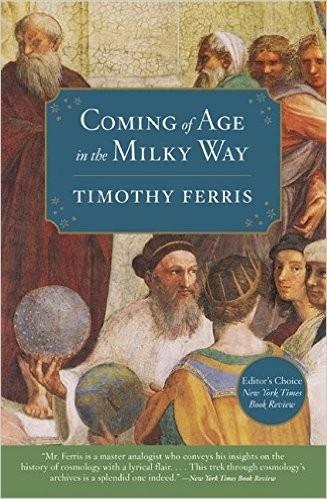
Coming of Age in the Milky Way
by
Timothy Ferris
Published 30 Jun 1988
At Harvard College Observatory, a leader in the dull but promising business of stellar taxonomy, photographic plates that revealed the color and spectra of tens of thousands of stars were stacked in front of “computers”—spinsters, most of them, employed as staff members at a university where their sex barred them from attending classes or earning a degree. (Henrietta Leavitt, the pioneer researcher of the Cepheid variable stars that were to prove so useful to Shapley and Hubble, was a Harvard computer.) The computers were charged with examining the plates and entering the data in neat, Victorian script for compilation in tomes like the Henry Draper Catalog, named in honor of the astrophotographer and physician who had made the first photograph of the spectrum of a star. Like prisoners marking off the days on their cell walls, they tallied their progress in totals of stars cataloged; Antonia Maury, Draper’s niece, reckoned that she had indexed the spectra of over five hundred thousand stars.
…
If the apparent magnitude of one is four times that of the other, we conclude (barring complications such as the interference of an intervening interstellar cloud) that the dimmer star is twice as far away. The relationship between the periodicity and the absolute magnitude of Cepheid variable stars was discovered in 1912 by Henrietta Swan Leavitt, one of a number of women hired at meager wages to work as “computers” in the Harvard College Observatory office in Cambridge, Massachusetts. Leavitt spent her days examining photographic plates taken through the twenty-four-inch refracting telescope at the Harvard station in Arequipa, Peru.
…
Noteworthy Events: Jacobus Kapteyn, studying the proper motions of twenty-four hundred stars, finds evidence of what he calls “star streaming”—that stars in our neighborhood move in a preferred direction—an early clue to the rotation of our galaxy. Time: 1911 Noteworthy Events: Ernest Rutherford determines that most of the mass of atoms is contained in their tiny nuclei. Time: 1912 Noteworthy Events: Henrietta Swan Leavitt discovers a correlation between the absolute magnitude and the period of variability of Cepheid variable stars, opening the door to their use as intergalactic distance indicators. Time: 1913 Noteworthy Events: Niels Bohr develops theory of atomic structure, in which electrons are said to orbit the nucleus in a manner somewhat akin to that of planets orbiting the sun.
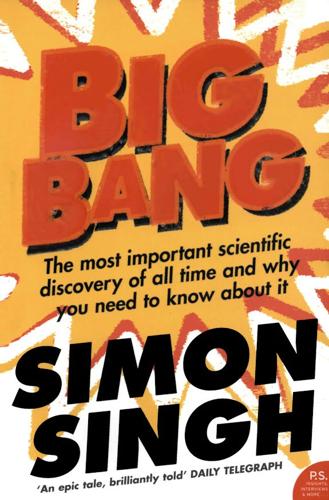
Big Bang
by
Simon Singh
Published 1 Jan 2004
Figure 43 The Harvard ‘computers’ at work, busy examining photographic plates while Edward Pickering and Williamina Fleming watch over them. On the back wall are two plots that show the oscillating brightness of stars. Although Williamina Fleming’s team of women computers were supposed to focus on the drudgery of harvesting data from the photographs so that the male astronomers could conduct the research, it was not long before they were reaching their own scientific conclusions. Endless days spent staring at the photographic plates had given them an intimate familiarity with the stellar objects that they were surveying. For example, Annie Jump Cannon catalogued roughly 5,000 stars per month between 1911 and 1915, calculating the location, brightness and colour of each one.
…
He also made the most of the increasingly sensitive photographic plates that were becoming available, creating images of unparalleled sharpness. Baade spent the war years studying a particular type of star known as an RR Lyrae star, a type of variable star similar to a Cepheid variable star. Williamina Fleming, who worked alongside Henrietta Leavitt at the Harvard Observatory, had shown that the variability of RR Lyrae stars could be used, like Cepheids, to measure distances. So far her technique had been used only within the Milky Way, because RR Lyrae stars are less luminous than Cepheids. However, Baade’s ambition was to use the ideal viewing conditions to find RR Lyrae stars in the Andromeda Galaxy, our nearest large galaxy.
…
Bailey, History and Work of the Harvard Observatory 1839-1927 (McGraw Hill, 1931) An interesting and largely non-technical (if somewhat dry) account of the research projects pursued at the Harvard College Observatory from its founding until the mid-1920s. It covers the work of Henrietta Leavitt and Annie Jump Canon, and explains the techniques and instruments they employed. Harry G. Lang, Silence of the Spheres (Greenwood Press, 1994) Subtitled The Deaf Experience in the History of Science, this book includes sections on John Goodricke and Henrietta Leavitt. Edwin Powell Hubble, The Realm of the Nebulae (Yale University Press, 1982) A somewhat technical book, based on the 1935 Silliman Lectures delivered by Hubble at Yale University.
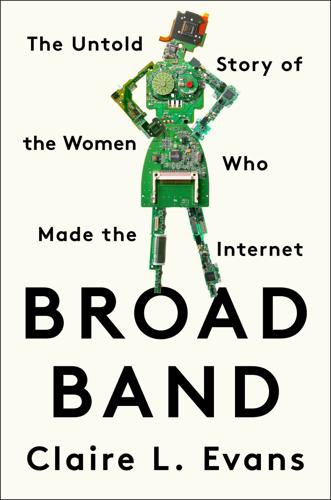
Broad Band: The Untold Story of the Women Who Made the Internet
by
Claire L. Evans
Published 6 Mar 2018
“The Harvard Computers are mostly women,” complained the director of a competing observatory, which employed only men, to a colleague, and they can be “got to work for next to nothing.” Known to history as “Pickering’s Harem,” the Harvard Computers cataloged ten thousand stars; Williamina Fleming, the erstwhile maid, discovered the Horsehead Nebula and helped develop a common designation system for stars, while her colleague Annie Jump Cannon could classify spectra at a rate of three stars a minute, and with a remarkable consistency that allowed her to discover a number of new and unusual stars. These women quite literally mapped the cosmos, but their wages were equivalent to those of unskilled workers—paid between twenty-five and fifty cents an hour, they earned barely more than they would have if they’d worked in a factory.
…
By the end of Ada’s century, although technically gifted women like her could find employment as computers on either side of the Atlantic, their formal titles weren’t accompanied by commensurate status or compensation. In the 1880s, for example, the astronomer Edward Charles Pickering hired only women to analyze and classify stellar data for his Harvard lab, including his own maid, Williamina Fleming. Although he would later champion the women working in the observatory, even presenting papers on Fleming’s behalf at astronomical conferences, Pickering didn’t hire them out of advocacy. He’d just wanted twice as many workers on the job, given that women were paid half the going rate. “The Harvard Computers are mostly women,” complained the director of a competing observatory, which employed only men, to a colleague, and they can be “got to work for next to nothing.”

The Milky Way: An Autobiography of Our Galaxy
by
Moiya McTier
Published 14 Aug 2022
And because hotter stars are brighter, this pulse in size and temperature also causes a predictable pulse in luminosity. The first variable star was discovered in your eighteenth century, but it took another 150 years for someone to realize the period of a star’s variability was related to its brightness. In the early 1900s, a tragically underemployed woman named Henrietta Leavitt made that discovery while working as one of the so-called Harvard computers. Believe it or not, that was the more polite nickname given to the dozens of women who analyzed data at the Harvard College Observatory.6 Leavitt was observing some of Larry’s Cepheid stars to measure their brightness and noticed that they had a peculiar pulse.
…
Leavitt’s work unlocked the door to greater cosmic distances and helped human astronomers understand the true extent of my magnificence. Cepheids as standard candles were used to prove the existence of other galaxies and even the expansion of the universe. It’s safe to say that the course of human astronomy would have looked very different if not for Henrietta Leavitt, and yet no one thought to appropriately award her work until after she died. You fools. Cepheids aren’t the only stars your astronomers use to measure distance. Sometimes they use something called a type 1a supernova as a standard candle. A supernova is a stellar explosion, and of course astronomers have separated them into categories.
…
By the twentieth century, the consensus among human astronomers was that my body was a flat disk about twenty thousand light-years across (the word “parsec” was just about to be invented in 1913 by an astronomer named Frank Dyson7) and that your sun sat somewhere near the middle. Will you humans ever miss an opportunity to try to put yourselves at the center of everything? A young rebel named Harlow Shapley had been using Cepheid variables (thanks to Henrietta Leavitt) to map globular clusters in my halo. Globular clusters are just what your astronomers call collections of gas, dust, and up to thousands of stars that are gravitationally bound together within a galaxy. Shapley drew two conclusions from his work. The first was that my body was much larger than his colleagues thought, closer to three hundred thousand light-years, or 90 kpc.

AIQ: How People and Machines Are Smarter Together
by
Nick Polson
and
James Scott
Published 14 May 2018
But it was also a photograph whose significance Hubble could have seen only by standing on the shoulders of Henrietta Leavitt—for she was the one who showed Hubble, and everyone else, how to measure the size of the universe. Fitting Prediction Rules to Data We’ll return to the story of Henrietta Leavitt at the very end of the chapter. For now, however, let’s keep her great discovery in mind as we revisit the two key ideas about pattern recognition that we mentioned at the beginning of the chapter. 1. In AI, a “pattern” is a prediction rule that maps an input to an output. 2. “Learning a pattern” means fitting a good prediction rule to a data set. We hope that Henrietta Leavitt’s pulsating stars have taught you the value of a good prediction rule for describing a pattern.
…
Nobody had one, that is, until a little-known astronomer named Henrietta Leavitt made a wonderful discovery. Leavitt found a new prediction rule that would allow astronomers to measure distances over millions of light-years, much farther than they had ever thought possible. She didn’t find the rule using trigonometry, the way the parallax rule had been found. Instead, she found it using data, by applying the same principle that Google, Apple, and Facebook use today to build their pattern-recognition systems. Leavitt’s Great Discovery Henrietta Leavitt ended up as an astronomer almost by chance. Born into a large family in Lancaster, Massachusetts, in 1868, she entered Radcliffe College in 1888 to study the humanities.
…
Or take image classification, like the software that automatically tags your friends in Facebook photos. Algorithms for image processing have gotten radically better over the last five years. But in chapter 2, you’ll learn that the key ideas here date to 1805—and that these ideas were used a century ago, by a little-known astronomer named Henrietta Leavitt, to help answer one of the deepest scientific questions that humans have ever posed: How big is the universe? Or even take speech recognition, one of the great AI triumphs of recent years. Digital assistants like Alexa and Google Home are remarkably fluent with language, and they’ll only get better.
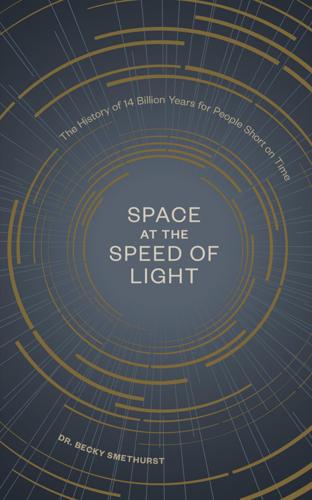
Space at the Speed of Light: The History of 14 Billion Years for People Short on Time
by
Becky Smethurst
Published 1 Jun 2020
They were the fuzzy, dusty things that umbrella-ed everything from star-forming regions in our own galaxy to the remnants of stars that had gone supernova3 and, unknown at the time, galaxies of billions of stars. Hubble was trying to work out the distance to these “spiral nebulae” using stars that pulsated, changing their brightness.4 These stars are called Cepheid Variables and were intensely studied in the Milky Way by Henrietta Leavitt in the early twentieth century.5 She discovered that how often the stars pulsed was related to how bright they are, something we now call the Leavitt Law. The faster a star pulses, the brighter it shines. When Hubble spotted these pulsating stars in the “spiral nebula,” he needed to understand how fast they pulsed in order to know how bright they were—and then from how bright they appeared he would know how distant the star was.
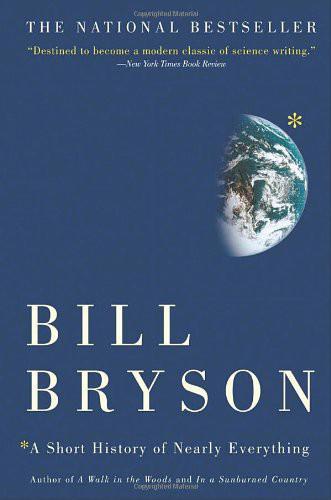
A Short History of Nearly Everything
by
Bill Bryson
Published 5 May 2003
The red shift gives the speed at which galaxies are retiring, but doesn't tell us how far away they are to begin with. For that you need what are known as “standard candles”—stars whose brightness can be reliably calculated and used as benchmarks to measure the brightness (and hence relative distance) of other stars. Hubble's luck was to come along soon after an ingenious woman named Henrietta Swan Leavitt had figured out a way to do so. Leavitt worked at the Harvard College Observatory as a computer, as they were known. Computers spent their lives studying photographic plates of stars and making computations—hence the name. It was little more than drudgery by another name, but it was as close as women could get to real astronomy at Harvard—or indeed pretty much anywhere—in those days.
…
The system, however unfair, did have certain unexpected benefits: it meant that half the finest minds available were directed to work that would otherwise have attracted little reflective attention, and it ensured that women ended up with an appreciation of the fine structure of the cosmos that often eluded their male counterparts. One Harvard computer, Annie Jump Cannon, used her repetitive acquaintance with the stars to devise a system of stellar classifications so practical that it is still in use today. Leavitt's contribution was even more profound. She noticed that a type of star known as a Cepheid variable (after the constellation Cepheus, where it first was identified) pulsated with a regular rhythm—a kind of stellar heartbeat.
…
Overbye, p. 55. 27 “In some sense, gravity does not exist . . .” Kaku, “The Theory of the Universe?” in Shore, Mysteries of Life and the Universe, p. 161. 28 “Edwin enjoyed a wealth of physical endowments, too.” Cropper, p. 423. 29 “At a single high school track meet . . .” Christianson, Edwin Hubble, p. 33. 30 “One Harvard computer, Annie Jump Cannon . . .” Ferris, Coming of Age in the Milky Way, p. 258. 31 “elderly stars that have moved past their ‘main sequence phase' . . .” Ferguson, Measuring the Universe, pp. 166–67. 32 “They could be used as ‘standard candles' . . .” Ferguson, p. 166. 33 “was developing his seminal theory . . .” Moore, Fireside Astronomy, p. 63. 34 “In 1923 he showed that a puff of distant gossamer . . .”

The Cancer Chronicles: Unlocking Medicine's Deepest Mystery
by
George Johnson
Published 26 Aug 2013
I walked outside, where orderlies and other staff stood smoking cigarettes. I walked by the emergency room, where victims of knives, automobiles, and guns arrived in ambulances. I walked back up the steps to the surgical floor and sat again. I took out my laptop and tried to work on a book I was writing. It was about Henrietta Leavitt, the woman who in the early 1900s discovered the blinking stars astronomers use as beacons to measure the emptiness of the universe. She died, childless, of stomach cancer. Before long Nancy’s brother arrived. The earth had continued to rotate and it was dark outside. The cafeteria closed, and the lights were turned off.
…
Using a device like Hillis’s, you could take their proteomic snapshots and lay one on top of the other and look for something that is different. Even if you don’t know what the pattern means, it might be used as a marker to identify which patients will most likely benefit from the drug. I was reminded of Henrietta Leavitt, the astronomer who had died of stomach cancer but not before discovering Cepheid variables, the pulsating stars cosmologists use to measure the universe. She would start with two images of the same patch of sky—glass photographic plates taken a few weeks apart. One would be a negative with the stars glowing in black.
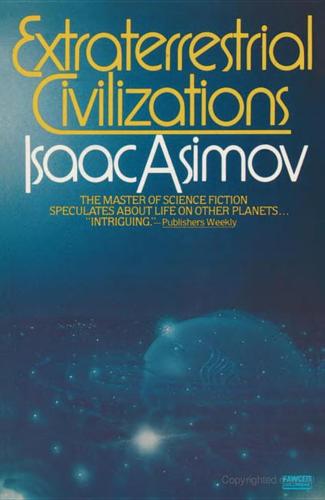
Extraterrestrial Civilizations
by
Isaac Asimov
Published 2 Jan 1979
They were not studied in detail until John Herschel observed them from the astronomic observatory at the Cape of Good Hope in 1834 (the expedition that fueled the Moon Hoax). Like the Milky Way, the Magellanic Clouds turned out to be assemblages of vast numbers of very dim stars, dim because of their distance. In the first decade of the twentieth century, the American astronomer Henrietta Swan Leavitt (1868–1921) studied certain variable stars in the Magellanic Clouds. By 1912, the use of these variable stars (called Cepheid variables because the first to be discovered was in the constellation Cepheus) made it possible to measure vast distances that could not be estimated in other ways.
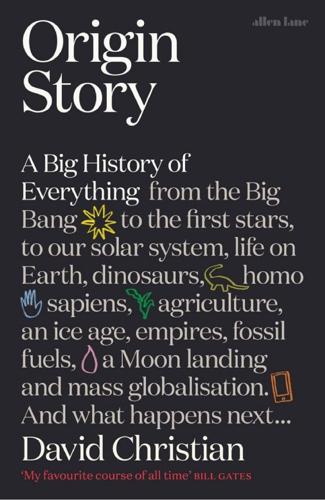
Origin Story: A Big History of Everything
by
David Christian
Published 21 May 2018
Unfortunately, even the nearest star, Proxima Centauri, is so distant (about four light-years from Earth) that you cannot detect any motion without fancy equipment. Not until the nineteenth century were astronomers able to measure the distance to nearby stars using parallax. But in any case, the objects Vesto Slipher was studying were much more distant. Fortunately, in the early twentieth century, Henrietta Leavitt, a Harvard Observatory astronomer, found a way to measure the distance to remote stars and nebulae using a particular type of star known as a Cepheid variable, a star whose brightness varies with great regularity (the polestar is a Cepheid). She found a simple correlation between the frequency of the variations and the star’s luminosity, or brightness, so she could calculate a Cepheid’s absolute brightness.
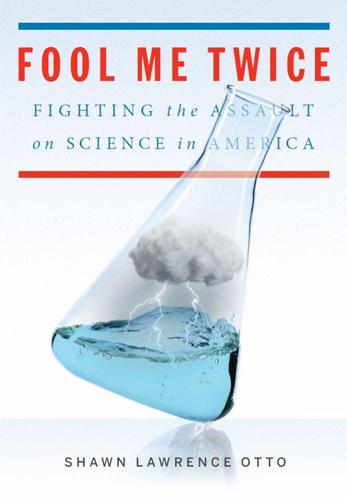
Fool Me Twice: Fighting the Assault on Science in America
by
Shawn Lawrence Otto
Published 10 Oct 2011
What he saw changed humanity’s view of the universe forever—and would further roil the controversy over science’s role in defining the origins of creation. A conservative Baconian observer, Hubble photographed a small blinking star in the Andromeda nebula that he identified as a Cepheid variable. This observation would become iconic in its power. Another astronomer, Harvard College Observatory’s Henrietta Leavitt, had in 1912 shown something remarkable about Cepheid variable stars: The longer their period, the brighter they appeared to be. This made sense. Stars were very faint, and to probe deeply, astronomers began to mount cameras to their telescopes and take very-long-exposure photographs on glass plates so they could capture light from stars that were too faint to see with the human eye.
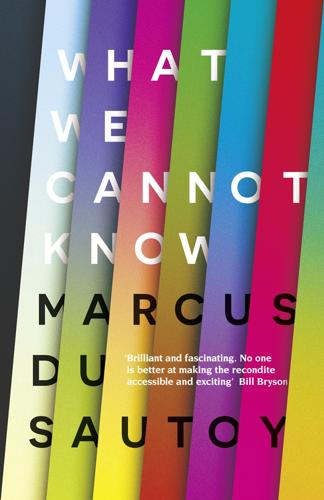
What We Cannot Know: Explorations at the Edge of Knowledge
by
Marcus Du Sautoy
Published 18 May 2016
By measuring the missing frequencies and their apparent luminosity, astronomers could work out how far the stars were from us. This gave astronomers a much clearer idea of the true depth of space. However, it was a very special pulsating star that turned out to provide the best way to measure distances across the universe. A Cepheid star twinkles, and in 1912 American astronomer Henrietta Leavitt discovered how to use these twinkling stars to navigate the universe. She was employed at the time not as an astronomer but as a ‘computer’ at the Harvard College Observatory, extracting data from the photographic plates for 30 cents an hour. Women weren’t allowed to operate the telescopes. She’d been assigned the task of analysing stars that grew brighter and dimmer over a period of time.
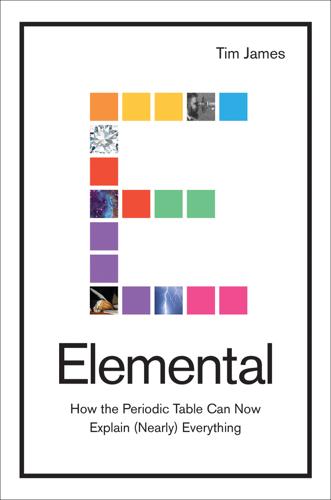
Elemental: How the Periodic Table Can Now Explain Everything
by
Tim James
Published 26 Mar 2019
Twenty-seven years later, William Ramsay extracted it from terrestrial rocks, making it the only element to be discovered in space before it was isolated on Earth.7 The next breakthrough happened in 1925 when the American astronomer Cecilia Payne-Gaposchkin successfully calculated how much of each element was present in a typical star. Payne-Gaposchkin studied astrophysics at Harvard under Harlow Shapley, one of the only astronomers in the world to let women take the subject, and wrote her PhD thesis on the star classes identified by another astronomer, Annie Jump Cannon (possibly the greatest name in science). Cannon was completing her nine-volume catalog of every known star when Payne-Gaposchkin began perusing the data. Being well versed in the new science of quantum mechanics (which most astronomers weren’t), Payne-Gaposchkin showed that the amounts of each element in stars were vastly different to the amounts found on Earth.
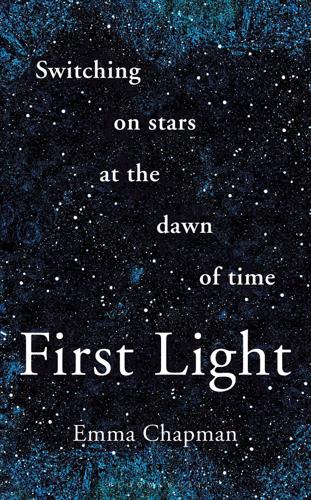
First Light: Switching on Stars at the Dawn of Time
by
Emma Chapman
Published 23 Feb 2021
Fleming evaluated stellar spectra and assigned them a letter according to the strength of the hydrogen absorption lines. They began by giving the stars with the most hydrogen the letter A, those with slightly less hydrogen B and so on down the alphabet, up to Q. This was rather cumbersome, and a later assistant of Pickering, Annie Jump Cannon, reorganised the system in 1901 in order of temperature, merging similar classes.5 She was quite the computer, classifying hundreds of stars per hour until eventually the alphabetical classes were reorganised into 10 classes: OBAFGKMRNS, which astronomers traditionally remember as Oh Be A Fine Girl Kiss Me Right Now Sweetheart.1 Each of these classes is subdivided into finer numerical divisions of temperature, so that our Sun is a G2 star.

The Last Stargazers: The Enduring Story of Astronomy's Vanishing Explorers
by
Emily Levesque
Published 3 Aug 2020
Her research is focused on understanding how the most massive stars in the universe evolve and die. She has observed for upward of fifty nights on many of the planet’s largest telescopes and flown over the Antarctic stratosphere in an experimental aircraft for her research. Her academic accolades include the 2014 Annie Jump Cannon Award, a 2017 Alfred P. Sloan fellowship, a 2019 Cottrell Scholar award, and the 2020 Newton Lacy Pierce Prize. She earned a bachelor’s degree in physics from MIT and a PhD in astronomy from the University of Hawaii. When she occasionally stumbles across some spare time, she attempts to spend it traveling, playing violin, skiing, messing with new recipes, or finishing triathlons very slowly.